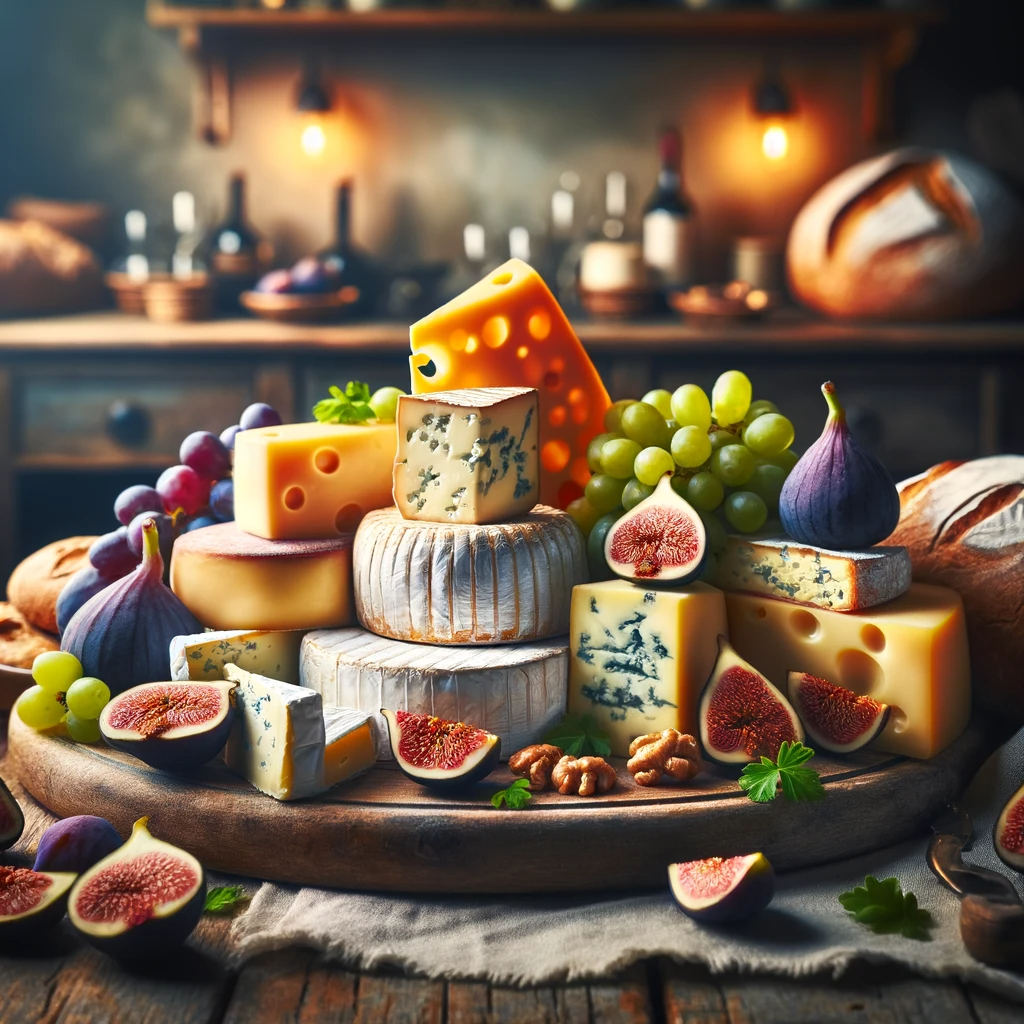When it comes to creating a delightful charcuterie board, one of the key elements that can truly elevate the experience is the pairing of cheese with complementary ingredients. A well-constructed charcuterie board is a symphony of flavors and textures, and choosing the right ingredients to accompany your cheese is essential. In this article, we will explore the best ingredients to pair with cheese on a charcuterie board, providing you with a comprehensive guide to create a charcuterie masterpiece.
Choosing the Right Cheese
Before we dive into the perfect pairings, let’s start with selecting the right cheeses for your charcuterie board. It’s important to have a diverse selection to cater to various tastes and preferences. Consider including:
- Soft Cheeses: Creamy and mild, soft cheeses like Brie, Camembert, or goat cheese provide a luscious base for your board.
- Hard Cheeses: Aged cheddars, Gouda, and Parmesan offer sharp and nutty flavors that contrast well with other ingredients.
- Blue Cheeses: Roquefort, Gorgonzola, or Stilton bring a bold, tangy kick to your board.
- Semi-Soft Cheeses: Cheeses like Havarti or Fontina are versatile and have a balanced texture and flavor.
- Fresh Cheeses: Mozzarella or ricotta are light and refreshing choices for a charcuterie board.
Now that you’ve selected your cheeses, let’s explore the perfect accompaniments to make your charcuterie board a culinary masterpiece.
The Ideal Pairings
1. Fresh Fruits and Berries
- Figs: Their natural sweetness and chewy texture complement soft cheeses beautifully.
- Grapes: Classic and versatile, grapes cleanse the palate and pair well with almost any cheese.
- Apples: Sliced apples offer a crisp, refreshing contrast to creamy cheeses.
- Berries: Strawberries, raspberries, and blueberries add vibrant color and a hint of tartness.
2. Nuts and Seeds
- Almonds: Roasted almonds provide a satisfying crunch and nuttiness that pairs well with hard cheeses.
- Walnuts: Their earthy flavor complements blue cheeses and adds a lovely texture.
- Pistachios: Delicate, slightly sweet, and visually appealing, pistachios are a charcuterie favorite.
- Pumpkin Seeds: Toasted pumpkin seeds offer a unique twist and a subtle crunch.
3. Cured Meats
- Prosciutto: This thinly sliced Italian ham is a charcuterie classic, with its salty and savory notes.
- Salami: Varieties like Genoa or soppressata provide a spicy and robust counterpoint to cheese.
- Chorizo: The smoky, spicy kick of chorizo pairs well with both soft and hard cheeses.
- Capicola: Mild and slightly sweet, capicola complements a wide range of cheese types.
4. Breads and Crackers
- Baguette Slices: Crusty on the outside and soft on the inside, baguette slices are perfect for spreading soft cheeses.
- Whole-Grain Crackers: These add a hearty, nutty flavor and pair well with aged cheeses.
- Crisp Lavash: Thin and delicate, lavash is great for wrapping and dipping.
- Gluten-Free Options: Don’t forget about gluten-free crackers for guests with dietary restrictions.
5. Condiments and Spreads
- Honey: Drizzle honey over soft cheeses for a delightful contrast of sweet and creamy.
- Mustard: A quality Dijon or grainy mustard offers a tangy kick that complements cured meats.
- Chutney: Fruit chutneys, such as mango or fig, provide a burst of fruity sweetness.
- Olives: A selection of briny olives adds a savory element to your board.
6. Pickles and Vegetables
- Cornichons: Tiny, tart pickles add a punch of acidity and crunch.
- Pickled Onions: Their vibrant pink color and tangy flavor make them a visually appealing addition.
- Roasted Red Peppers: Sweet and smoky, roasted red peppers pair well with a variety of cheeses.
- Artichoke Hearts: Marinated artichoke hearts offer a unique Mediterranean flair.
Presentation Tips
To truly impress your guests, pay attention to the presentation of your charcuterie board:
- Balance: Distribute ingredients evenly to create a harmonious look.
- Variety: Use different shapes, colors, and textures to make the board visually appealing.
- Garnishes: Fresh herbs like rosemary or thyme can be used as garnishes.
- Labeling: Small signs or labels can help guests identify specific cheeses and accompaniments.
- Quality Over Quantity: Focus on quality ingredients rather than overcrowding the board.
In conclusion, crafting a memorable charcuterie board is an art, and choosing the best ingredients to pair with cheese is a crucial part of the process. Experiment with different combinations, trust your palate, and don’t be afraid to get creative. With the right cheeses and accompaniments, you can create a charcuterie masterpiece that will leave a lasting impression on your guests. Enjoy the culinary journey!
